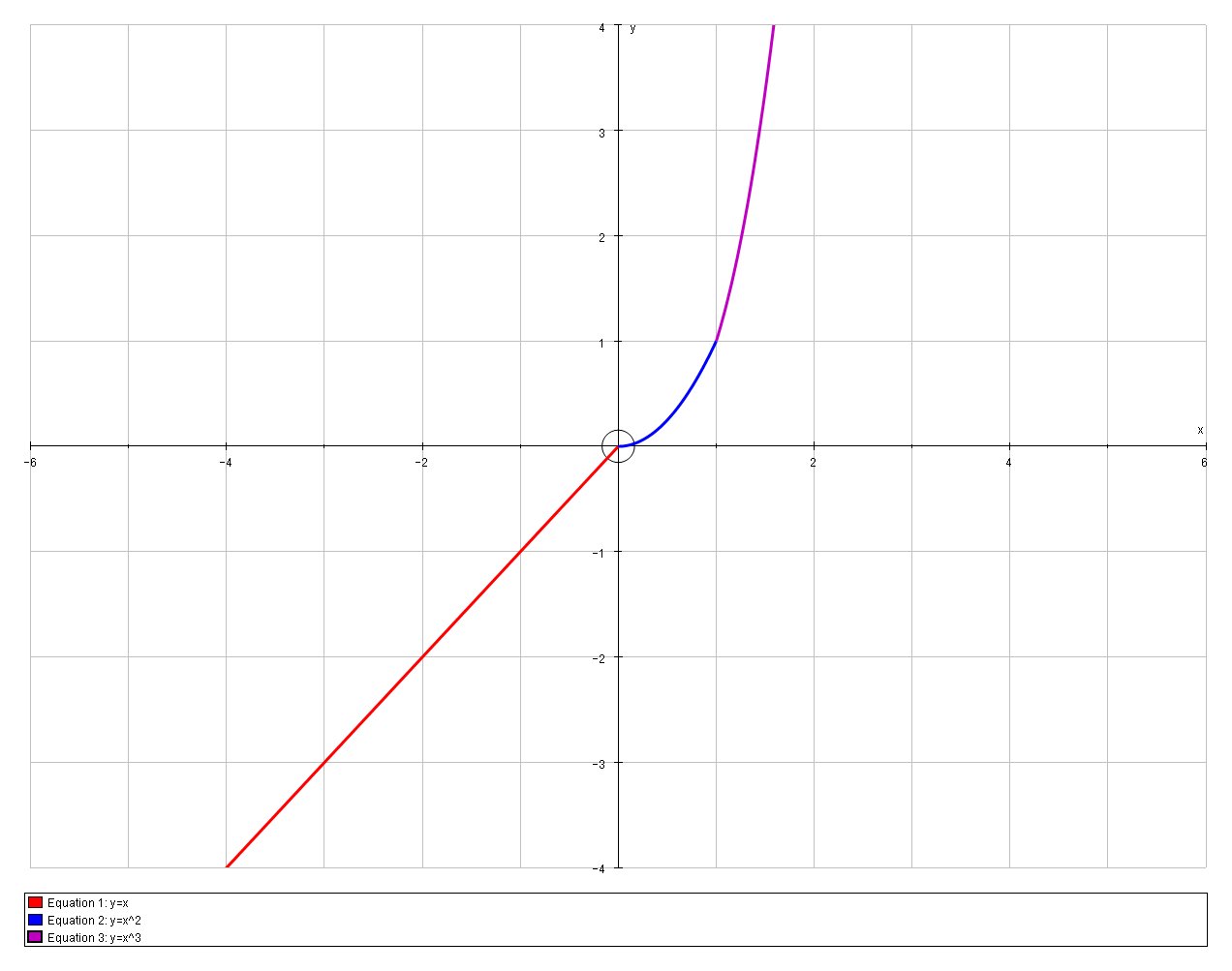If g(x)=x if x<0, x^2 if #0<= x <=1#, x^3 if x>1, how do you show that g is continuous on (all real #'s)?
1 Answer
The function
# g(x) = { (x,x<0), (x^2, 0 le x le 1), (x^3, x > 1) :} #
Which we can graph as follows:

The individual functions
When
Consider the left-hand limit:
# lim_(x rarr 0^-) g(x) = lim_(x rarr 0) x \ \= 0 #
And the right-hand limit
# lim_(x rarr 0^+) g(x) = lim_(x rarr 0) x^2 = 0 #
And the value of the function:
# g(0) = 0 #
So
When
Consider the left-hand limit:
# lim_(x rarr 1^-) g(x) = lim_(x rarr 1) x^2 \ \= 1 #
And the right-hand limit
# lim_(x rarr 1^+) g(x) = lim_(x rarr 1) x^3 = 1 #
And the value of the function:
# g(1) = 1 #
So
Hence

